|
Welcome to the Autumn issue of the LIFE Dee River newsletter!
Watch a short reel of some of our project highlights to date here.
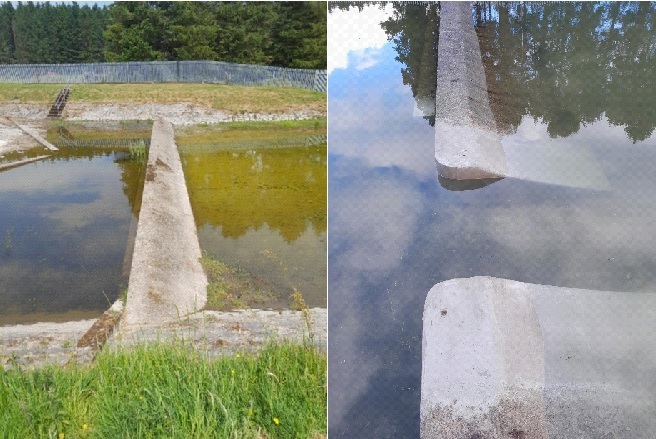
Recently, work was undertaken to cut a 1 metre wide notch in a weir within the Bala Sluice complex. Weir Z is the artificial overflow channel for the river Tryweryn, which is usually dry and only has water running through it in high flows. At the downstream end of Weir Z is a concrete barrier across the river, which causes an area around the size of a swimming pool to trap water once the high flows drop off. This means fish are also susceptible to being trapped in this area as they migrate within the river leaving them vulnerable to predation. By cutting the notch, we have provided a safe route for fish to escape from the area when water levels drop.
In the past, this has been a barrier for downward migrating fish as they would get stranded within the impounded area (area of pooled water) immediately above the concrete weir. Moments after the weir was breached, an interesting short video was recorded which highlights the importance of free passage for fish at all structures. The video shows a few hundred juvenile fish leaving the impounded area through the new notch and are now able to pass through freely!
|
|
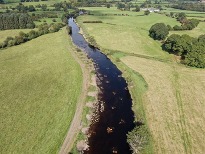
During September, we carried out a large boulder introduction project in the upper main river near Bala. There would have been many boulders in this section of river in the past, but in the 1950s it was canalised and again dredged in the early 2000s when the weir was refurbished. When the river was canalised, all boulders and in river material were removed, destroying vital habitat for fish, especially juveniles. This work has seen 500 tonnes of locally sourced boulders placed across a 400-metre stretch to partly replace what has been removed in the past, creating much needed fry habitat and refuge for larger fish, as well as providing flow diversity.
We're grateful to Rhiwlas Estate for their cooperation with this project, and the support from Bala and District Angling Association who regularly visited the site during the work with valuable input. View photos here.
|
|
|
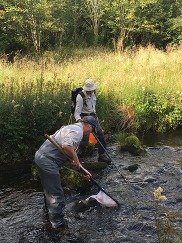
Good news - our recent electric fishing surveys at Morlas Brook have once again found increased numbers of juvenile salmon (fry and parr) in areas upstream of the site where we removed a concrete ford in September 2021. This confirms that salmon continue to migrate into the area we opened up when we removed this barrier, clearly demonstrating the environmental benefits of weir removal.
We’ve also been electric fishing other tributaries in the catchment, with increased numbers of juvenile salmon being seen on the Tryweryn following our gravel introduction work here two years ago.
However, as suspected, our survey on the Alwen found no juvenile salmon at the site above a large road culvert on the B4501. We are due to carry out work here in the next few weeks to help improve passage for fish through this culvert, allowing them to reach prime spawning grounds upstream. We’ll be following up with more surveys to monitor any changes and hope to see more positive results following our work here. Read the full electric fishing update here.
|
|
|
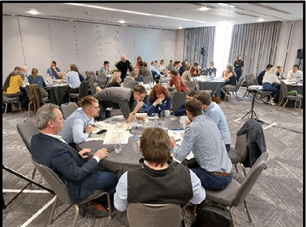
Working in collaboration with the River Restoration Centre, the LIFE Dee River team are excited to be assisting in hosting the River Restoration Conference in Llandudno next year. The conference brings together national and international experts and practitioners working on river restoration across many different areas. Over 300 people are expected to attend the conference, being held at Venue Cymru from the 24th to the 26th April 2024. We will be taking the EM River model to the conference to demonstrate in-river impacts, and give people the opportunity to get a bit hands on!
The first two days of the conference will include presentations, workshops and short site visits, with the third day made up of full day site visits to some of the project sites where we have delivered interventions. This will give us the opportunity to talk about the impact structures have on rivers and how we can avoid these issues.
Members of the LIFE Dee River team will be presenting some of the different elements of the project over the course of the conference, covering topics such as river connectivity, monitoring and results of interventions. Anyone is welcome to attend the conference, more details can be found here.
|
|
|
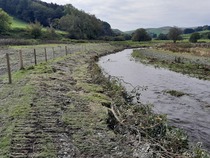
In 2022, following approval from the landowner and tenant farmer, we erected 600 metres of stock fencing along the right hand bank of the river Ceiriog, near Tregeiriog, to prevent cattle and sheep polluting the river and eroding the bank. Alternative water provision was made through two troughs fed by one solar powered pump.
However, since then, the river has further eroded the outer bend, threatening the new fence line and damaging a piece of it. In October this year, this outer bend was strengthened by creating 60 metres of natural revetment, with locally coppiced timbers and brash, and the fence line moved back by 3 metres.
Given the powerful erosive force of the river at high flows, it is hoped to further strengthen the bank and reinforce the revetment by planting with trees over the coming months. This should further enhance biodiversity and provide shade and cover for fish and other aquatic life.
|
|
|
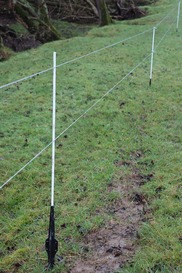
Our local contractors are currently working on a fencing scheme on the main section of the Dee in Corwen, in the upper catchment. This will create a 2.8km riverside corridor along the river and in places it will span across both banks. By fencing this section of river, it will ensure that livestock are prevented from accessing the watercourse, which will help create a healthier river with less bank erosion and encourage wildlife to thrive. Additionally, nine drinking water troughs will be connected to the mains as an alternative water supply for livestock, and stiles are also being installed along the fence line to allow access to the river for anglers.
As this area is susceptible to flooding, we have trialled the Kiwitech arrowhead posts. This is a type of permanent fibreglass post which will flex and bend over under strong pressure instead of snapping like common wooden or plastic fencing alternatives, which makes them a much better alternative in areas prone to flooding. We look forward to seeing how the new arrowhead posts hold up during any high flows this winter.
|
|
|

This month, the team headed up to Cumbria to visit the LIFE R4ever Kent project, a similar river restoration LIFE Programme to ours, along with the 4 Rivers for LIFE team. It was a fascinating few days of site visits to see the great work they’ve delivered so far and what they have planned for the rest of the project, including weir removals, tree planting, fencing, bank stabilisation, sediment control, and agricultural schemes.
We particularly enjoyed the visit to the Freshwater Biological Association Species Recovery Centre where they are working to increase populations of the critically endangered freshwater pearl mussel, and are carrying out extensive research in this area.
Thanks to the project and all their partners for an informative and inspiring few days. View photos here.
|
|
|
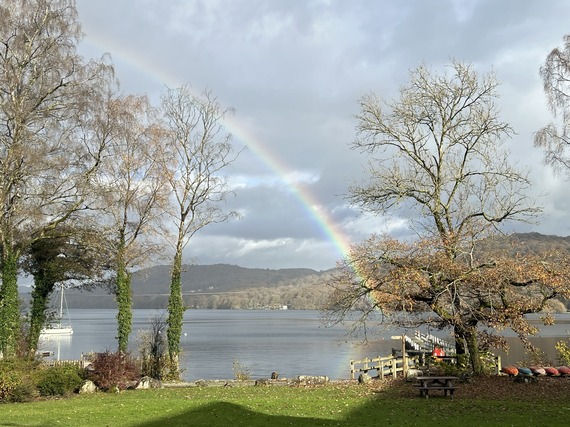
- Alwen culvert fish easement will be delivered over the next few weeks to allow salmon to better access the improved spawning ground upstream of Alwen culvert. This has required careful design and collaboration with Conwy County Borough Council to design a structure that provides good fish passage, whilst also ensuring the structural integrity of the culvert is not compromised.
- Tree planting across the catchment – we will be planting lots of trees this winter, with some trials using different species and methods following recommendations from other river restoration projects. At one of the sites we have fenced over summer 2023, we will be planting black poplar (Populus nigra) which has been shown in other countries to be very good at stabilising river banks and gravel shoals. This will be a long term investment to help the river Dee.
|
|
|
|
|